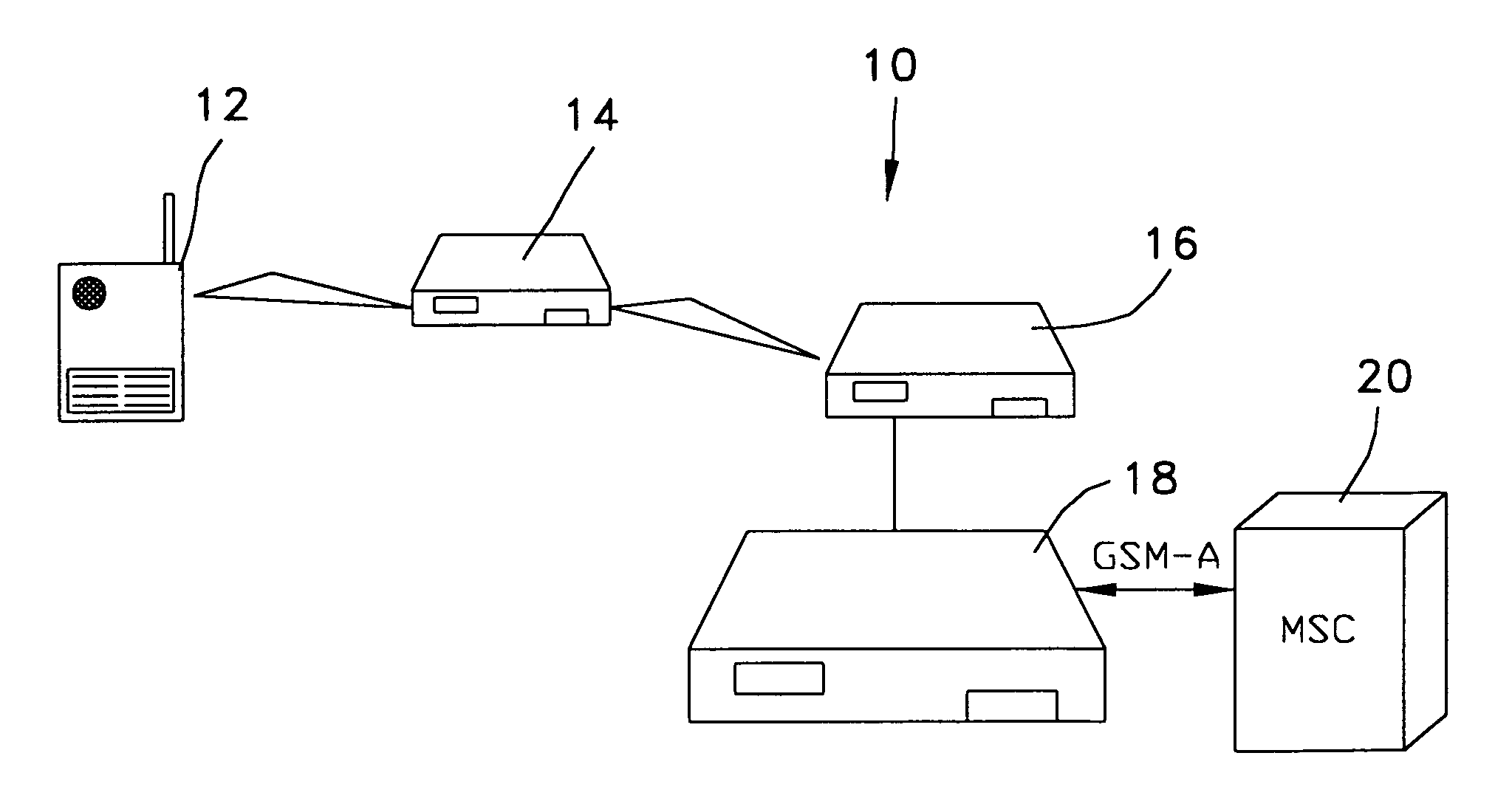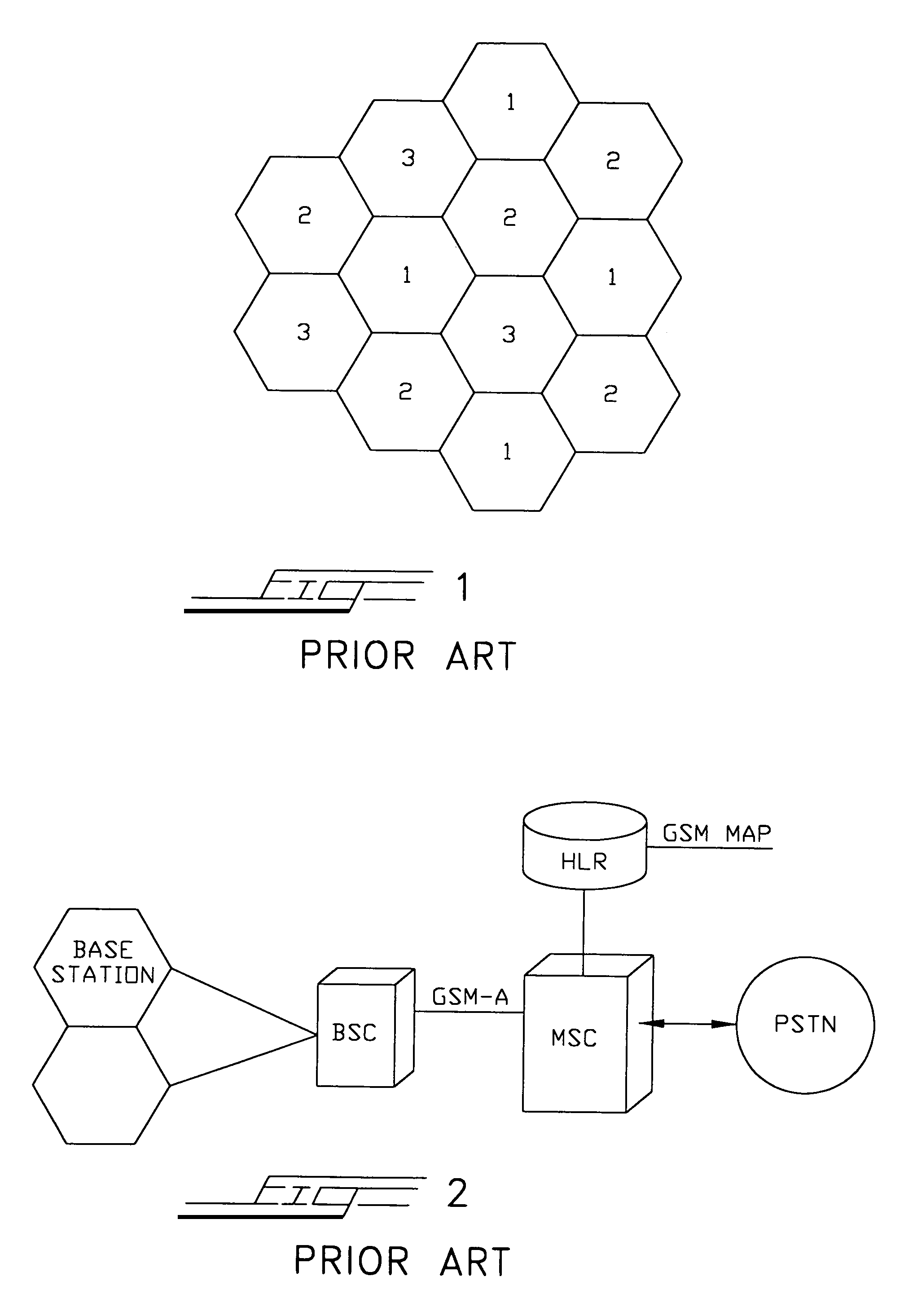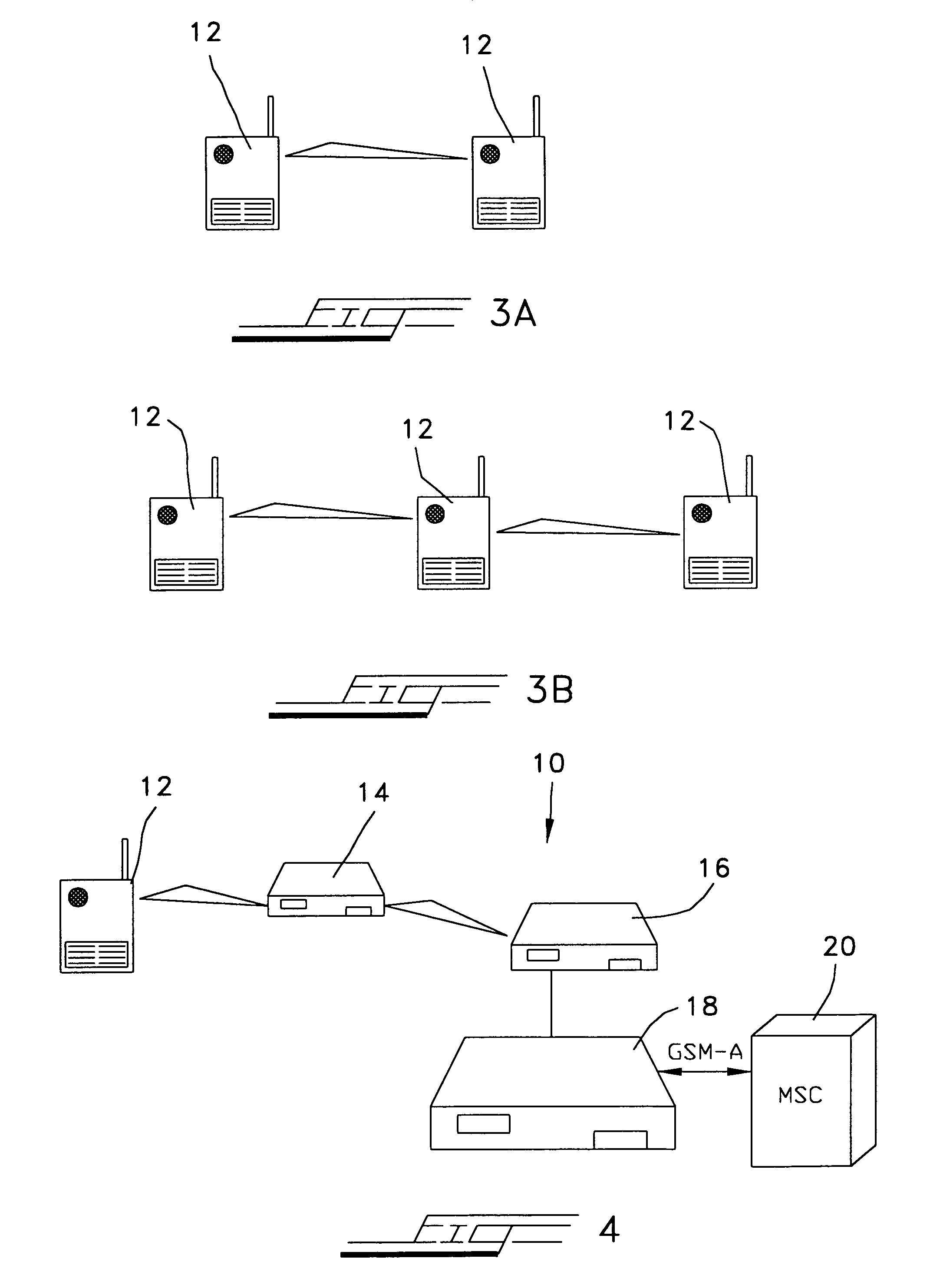Ad hoc peer-to-peer mobile radio access system interfaced to the PSTN and cellular networks
a mobile radio access system and peer-to-peer technology, applied in the field of ad hoc peer-to-peer mobile radio access system interfaced to the pstn and cellular networks, can solve the problems of inefficient use of available spectrum, data services providing very limited bandwidth to the end user, and tdd systems not being deployed for voice systems
- Summary
- Abstract
- Description
- Claims
- Application Information
AI Technical Summary
Benefits of technology
Problems solved by technology
Method used
Image
Examples
Embodiment Construction
[0038]Referring now to the drawings in greater detail, and in particular to FIGS. 3–8, the system of the invention will be described for linking the ad-hoc radio access system 10 of the present invention tot, an external, cellular-switched network. The ad-hoc radio access system of the invention is made up of four main, specific components. As seen in FIGS. 3A, 3B, and 4, these four components are: a plurality of mobile radio terminals 12 capable of receiving and transmitting at least one of voice and data communications, at least one router 14, at least one gateway node 16, and at least one cellular gateway controller 18, which gateway controller is interfaced to the Main Switching Center (MSC) 20 of a conventional or next-generation cellular network system. The capabilities defined within the system of the present invention are contained within the gateway nodes 16 and the gateway controller 18. The gateway controller 18 centralizes all of the interworking or interlacing protocols...
PUM
 Login to View More
Login to View More Abstract
Description
Claims
Application Information
 Login to View More
Login to View More - R&D
- Intellectual Property
- Life Sciences
- Materials
- Tech Scout
- Unparalleled Data Quality
- Higher Quality Content
- 60% Fewer Hallucinations
Browse by: Latest US Patents, China's latest patents, Technical Efficacy Thesaurus, Application Domain, Technology Topic, Popular Technical Reports.
© 2025 PatSnap. All rights reserved.Legal|Privacy policy|Modern Slavery Act Transparency Statement|Sitemap|About US| Contact US: help@patsnap.com



